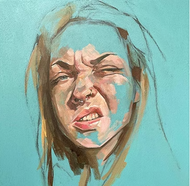Artist Interview: Flo Lee
Posted by Cass Art on 5th Mar 2021
In a short space of time Flo Lee has had great success in her art career. She has been featured in print and online publications, held small solo exhibitions, collaborated with interiors enthusiasts and more recently secured a relationship with a London, (Notting Hill) based Gallery that will be selling her work. We were delighted to speak to Flo about her practice, her amazing #100headchallenge and what makes a good portrait.
Hi Flo, thanks so much for taking the time to speak to us, firstly could you tell us a bit about your journey as an artist?
Thank you for speaking with me. My Artistic journey has been a bit stop/start really. I studied Art at A -Level, then completed my Foundation degree, then finally studied for a HND in Fine Art. That was where my venture into art ended for around 13 years. I left College not really knowing how to pursue a creative career and ended up working in Recruitment for 13 years. I would still paint from time to time but really not that often. In November 2017, encouraged by my family I took part in an “Art Trail” in Bristol- where you essentially display your artwork in your home and people can come and visit and buy your work. This was the first thing that really got me creating again. Then in February 2018, myself along with all of colleagues, got made redundant from my job of 13 years. Once again encouraged by my family, I decided to try and pursue a career as an Artist.
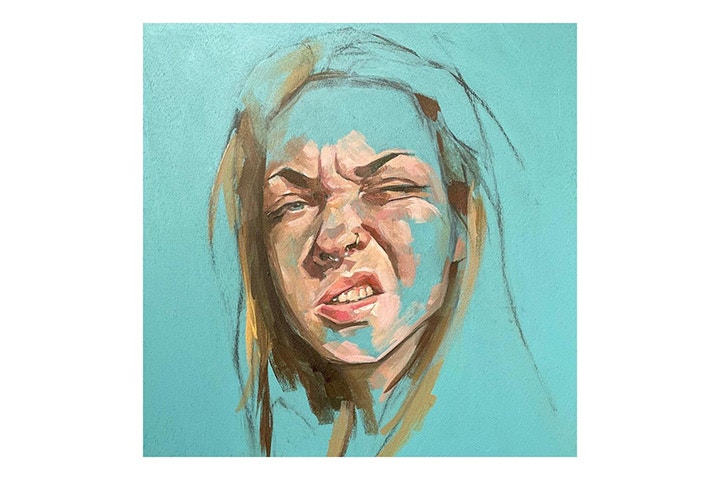
What was initially that drew you to portraiture?
When I started painting again, I tried not to overthink what I was painting, but at that time I certainly didn’t think I would fall in love with portraiture. The year I was made redundant, I had actually challenged myself to draw or paint a unique piece of Artwork every single day. It was a great way to try lots of subjects, and techniques without worrying too much about the outcome.
Probably mid-way through 2018 I started to paint portraits/faces, and I initially fell in love with the technical challenge of it. If I painted a face incorrectly, when my intention was to make it accurate, it was obvious. If I painted a recognisable face but it lacked likeness, then this drove me to continue to try and grasp this skill. Then it went deeper, I wanted to convey emotion, age, stories, explore colour. With portraiture the inspiration is literally infinite, and also accessible, as even with no one else to paint, I would always have myself!!
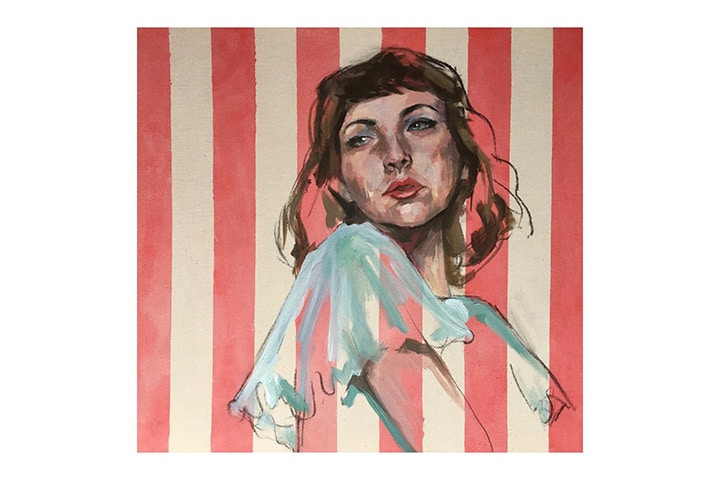
Your work has such a unique individual aesthetic with the space you leave in your work which lets our minds map together what may be perceived as unfinished area. Could you tell us about how you developed this style and also, how you know a piece is finished in your mind?
I have always loved paintings that from a distance appear realistic, but up close become almost abstract due to their marks. I remember being younger looking at these types of paintings and trying to figure out how artists achieved that and intrigued by how our eyes and minds piece these marks together. I find big blank white canvases/surfaces intimidating- so would get over this hurdle by either painting a coloured ground on a surface or by adding some sort of pattern. I think it was this technique that facilitated my style of leaving areas “unfinished”. The coloured grounds would read as a correct value to a particular area of the portrait- there was no need for me to change the colour.
I have tried both painting without an initial drawing and painting with a portrait sketched out and I prefer the latter. I couldn’t seem to figure out a way of obliterating the initial drawing successfully to be just be left with a painted portrait, and actually figured out that I liked some of my drawing lines still showing through. I think that this creates a storytelling aspect to my work, and also satisfies my curiosity with trying to figure out other artists painting/drawing techniques, as my process is entirely visible in my paintings. I am also inspired by a quote from the artist Steve Huston (I think)- “Art is a conversation, not a lecture.” I think its really important, for me in my work, to let the viewer create their own story from what they see, I don’t create my portraits to instruct how someone should feel about them, merely to engage with them. I think part of the way in which I can achieve that, is to leave areas undeveloped or less refined, and encourage people to look at the painting more closely rather that make assumptions about what they see.
To determine when a painting is finished is mostly intuitive. I often have an idea of how much or little detail I want to paint, but this also changes throughout the process. I get to a point, where I feel satisfied that the portrait tells you enough but not too much.
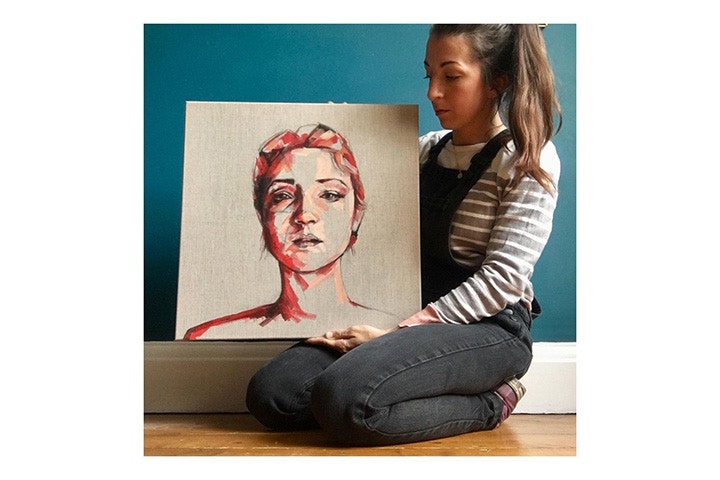
The last year or so has been so tricky for all of us and we’ve spoken to a few people who have struggled creatively. How have you found the last year and would you have any advice for anyone struggling to find that creative spark?
This last year has been like no other!!! I have 2 school age children so have been home schooling as well as working-I haven’t had the opportunity to stop painting as we require the income for our family/mortgage/bills etc. A lot of motivation has been because I have had to keep going, so I haven’t had chance to let my creative spark stop.
However, this doesn’t mean I haven’t had creative lows. I have had real dips in my faith in my ability to paint, my ability to find inspiration that really excites me. Sometimes I would feel I was painting and not being honest with myself about really being inspired by what I was doing. The advice I would give to someone, and this really isn’t for everyone, is just to keep creating, but make it accessible. If getting your paints out feels too much then get a scrap of paper and doodle, make and draw without concern for the outcome. If you’re feeling uninspired just try something new, you might like it, or it might make you realise that you actually prefer what you were doing initially. Don’t be hard on yourself, don’t compare yourself, and create to please yourself not others. I find I lose my creative spark, when either I’m trying to think too much about painting something that I think others will like, or if I have been negatively comparing myself to others- neither will do you any good.
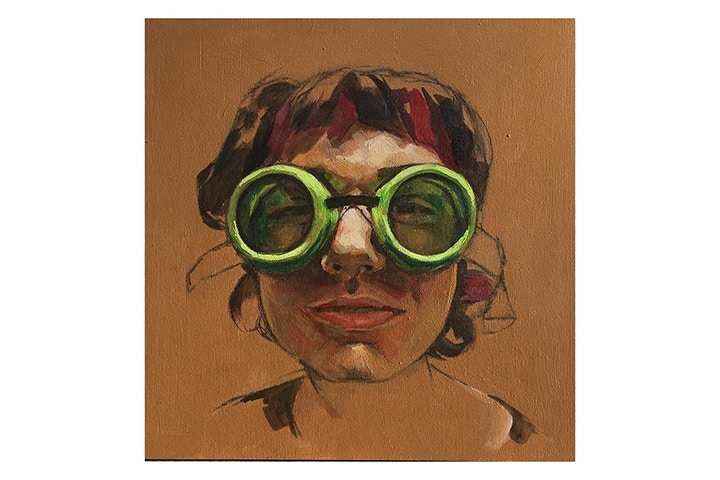
Looking at you work I can tell materials are very important to your practice. What are your go to materials and why are these important to your practice?
I think that as my artistic journey has developed, I have started to understand more about the products I like, use, and their individual qualities. High pigmented paint is really important to me as I like to be in control of the transparency of a colour and how much I have to layer it. I use acrylic paints, my favourite brands at the moment are Liquitex and Sennelier. I have been more recently been painting on plywood boards and also linen- I find that Pebeo make good quality unbleached linen boards and stretched on frames as well.
I think these are important to my practice, firstly because if I understand the qualities and attributes of what I am using I am able to manipulate them and know the outcome, secondly because I want my artworks to last and not deteriorate over time.
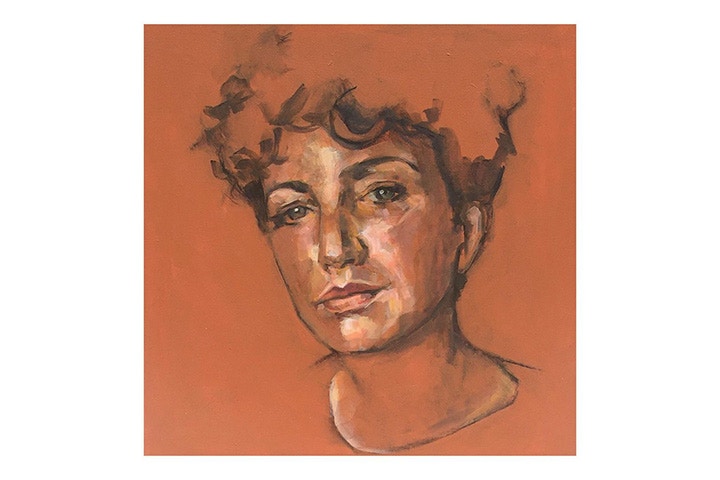
You’re a prolific painter and you recently completed a #100headchallenge. Could you tell us about this please?
At this moment in time, I literally have just one left to paint!! I started this challenge in April 2020 after seeing an Artist friend, Lucy Pass, take on the same challenge. It was really exciting to watch her paintings develop, and form a collection, without it feeling to constrained by a theme! One day I would love to create a body of work where I have pushed a theme or narrative, but at the moment my brain doesn’t seem to work like that. With the 100 heads challenge – I saw it as a way to create a body of work with a very definite beginning and very definite end- but with a lot of flexibility between these 2 points. I also thought it would be a really good way of me looking back at my work to see if I could see improvement and development in my skill set, I can also see a real emotional journey looking through them now. I am hoping one day that I will be able to make a book from all of these portraits, and I am also in the process of creating “one off” prints to sell for charity.
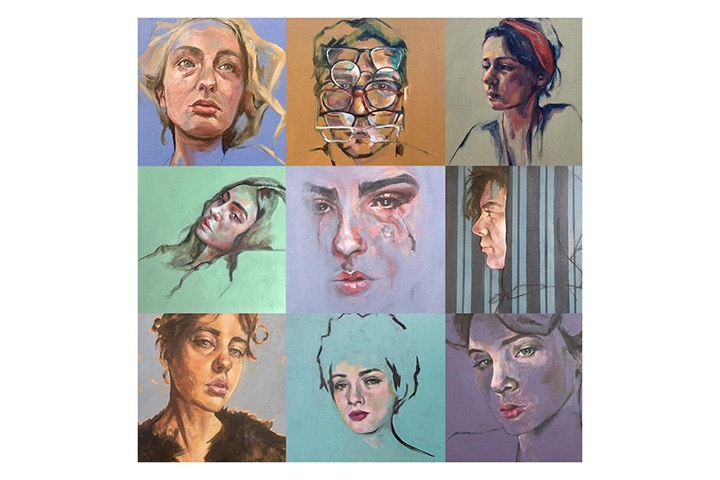
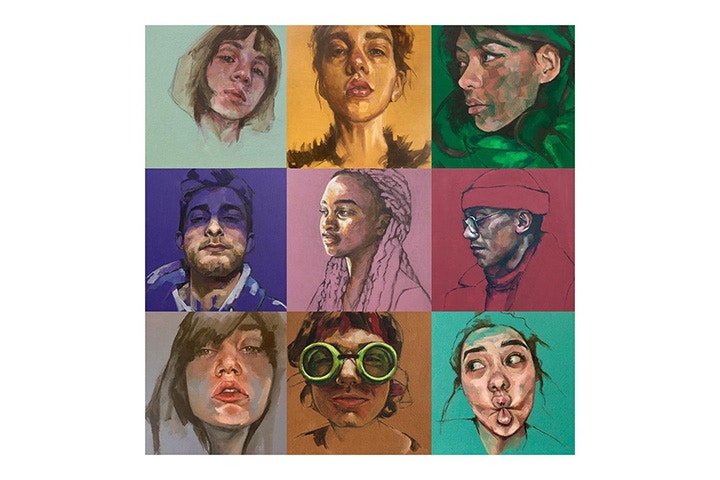
How did you find this experience?
I have found it at times exhausting and never ending, urging myself to get to number 100, but now that I am at the end, I don’t want it to be over- a bit like when you are reading a good book, you are almost racing to the end but then don’t want to finish. Most of the time I have found it exciting, and positively challenging. I have now a greater understanding of how I like to paint and how I can achieve that. I have slowly produced more accurate initial drawings and have therefore become quicker at doing this.
I have also learnt a lot about myself and need for validation for my art. I have had quite a lot of people regularly check in to see my new portraits as a part of this challenge and I have been fortunate to sell portraits as well. At one point it really hit me, when there seemed a lack of interest in my work, and people also weren’t buying it. This led to a lot of self-doubt about my ability, but it was purely based on the external reaction to my work rather than how I felt about what I was producing. Of course, I am grateful to everyone who offers support and encouragement, I want to make Art that others enjoy and engage with. However, I have realised that I need to make Art for me, that I feel satisfied by, that I am proud of, or have enjoyed the process, that way if it doesn’t sell or doesn’t receive good engagement, I still feel validated.
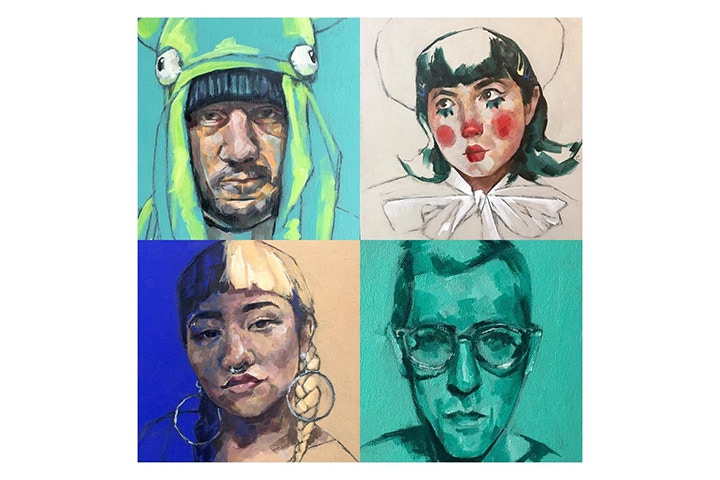
Finally, what do you think makes a good portrait?
Oh that’s a big question.
For me, a good portrait could be a collection of beautiful or interesting marks that form an intriguing portrait, a portrait created purely for its aesthetic qualities. But also, I love a portrait that tells me about the artist and the subject. I used to love visiting old historical/ancient buildings and envisaging the people that would have lived there, and thinking about me touching the things they would also have touched. I enjoy experiencing that same feeling when I look at paintings/portraits and feel like you can see the artist that made them. This is why I love seeing the marks made by artists, marks that can’t be replicated, not something too refined. I enjoy a portrait where the subject matter encourages me to engage with it, but not baffle me or make me feel unworthy of enjoying the portrait because the meaning behind them is beyond my understanding or intellect.
Therefore, I think that what makes a good portrait, is not whether it’s realistic, aesthetically pleasing, poignant, full of emotion, or tells a story. In my opinion a good portrait is one that evokes any sort of emotional reaction or interest in the viewer or the artist who created the piece.
Flo, thanks so much for taking the time to speak to us.
Be sure to follow Flo's amazing work on her Instagram here.
FEELING INSPIRED?
Shop online for everything you'll need. Don't forget to hashtag #cassart on social media to show us your creations

